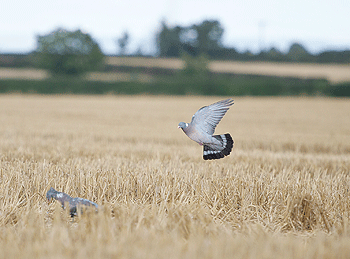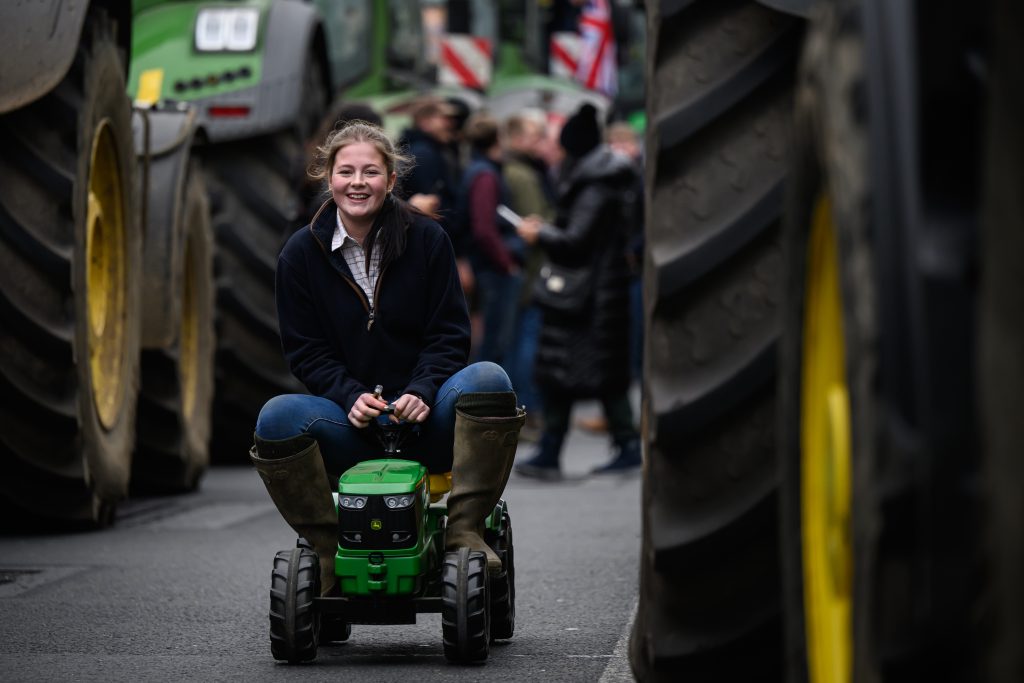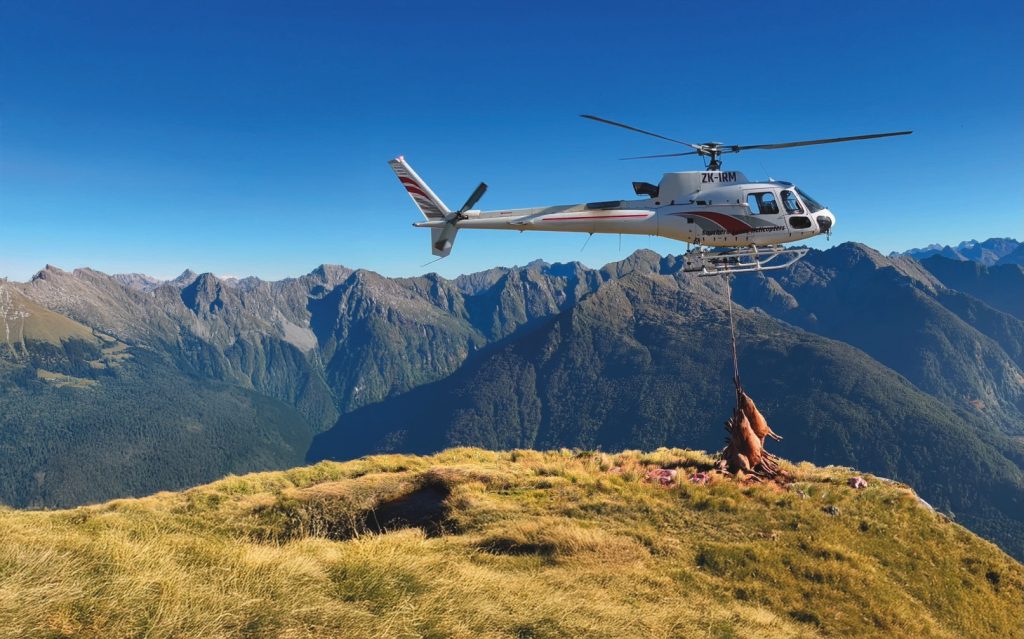Win CENS ProFlex DX5 earplugs worth £1,149 – enter here
Pigeon shooting on laid crops
<strong>Top tips for decoying over laid crops</strong>

It’s been a mixed few weeks recently. The spring rape came good for shooting in the end even though there were large areas of it, and this year has produced good bags late into the crop’s life cycle. Peas were again slow to get going, but produced good results, especially when the weather really started to heat up, while mustard also provided some fantastic late-evening outings.
The harvest is just around the corner, and as I write, the weather is scorching. I’ve been paying careful attention to the ripening barley and wheat, and having spoken to many farmers, they all agree that the barley is currently about two weeks behind — mainly due to the poor weather during drilling and cold soil temperatures — but it’s getting there.
My attention is now focused on shooting the first laid crop. I’ve walked many fields, using the tramlines to assess the state of the crop, and the ripening grain is milky — perfect for any hungry pigeon. Luckily for the farmer, there are currently few, if any, laid areas. Shooting over a true laid crop is a rarity these days. This situation may be great for the farmer, but not so for the pigeon shooter.
Modern farming techniques have really improved the strength of crops. Years ago one would see huge areas laid flat, mainly after heavy thunderstorms or windy weather, or where nitrogen application had been used excessively causing the plant to grow quicker, taller and weaker in the stem. New strains of barley with shorter, stronger stems have enabled it to withstand the elements and to support the important ear of the plant. Meanwhile, GPS spraying systems now allow farmers to apply the exact amount of fertiliser required on each part of a field. Many farmers also spray straw stiffener on wheat and some barleys. Science is combatting the problem of laid crops. However, barley straw is currently fetching a good price, so you may find some farmers growing longer-stemmed varieties to improve the yield of straw, especially in livestock areas.
Pigeon survive by adapting their behaviour, especially when a rich food source is available. It is now not uncommon to see pigeon falling into standing crops — both barley and wheat. You will see them utilising the tramlines, but also knocking the crop down with the weight of their body and wings to get at the milky grain. You will be able to shoot big bags, but as a pigeon shooter your responsibility is to protect crops, and if more damage is done picking birds in standing crops, then unfortunately, unless the pigeon are a huge problem, the crop should be left alone.
As I write, the weather is incredibly hot and the weather reports are constantly talking about the potential for thunderstorms. After one heavy storm, be on the lookout, as once an area of barley goes flat, it will not take long for pigeon in the area to find it — especially with the grain in its milky state.
Reconnaissance
As ever, your reconnaissance is key. It is important to keep in touch with local farmers and landowners, and if your ground has barley on it, keep a constant eye on it. If any areas do go flat and the temperatures stay high, birds will not be out feeding until it starts to cool down — I would suggest 4pm onwards would be a sensible time to start a reconnaissance session. Birds may be going into the standing crop around this time, and this will give you an idea of any early interest, and a rough idea of what’s in the area.
If parts of the crop do end up being laid, you can guarantee that this interest will increase. You will need an element of luck with regard to the location of any laid crop, and I tend to find that if a crop does end up being laid, it is usually around the margins of fields or up against spinneys. I’m not sure of the reason for this, but it may be to do with increased nitrogen around the margins or because of wind and rain not being allowed to pass through the crop due to a belt of trees, for example, acting as a stop. This is something I have observed over the years. The chosen spot for the pigeon and where you should situate your hide will be obvious.
Decoying
You can decoy over small laid areas, but it is easier over large areas for two reasons: the visibility of oncoming pigeon and the ease of picking-up dead birds. When shooting over laid crops, it is imperative that you minimise any damage to standing crops and that you are able to pick all your birds (wounded birds being the priority).
The height and movements of your decoys are key when thinking about the
picture you are going to set out. During your reconnaissance, you will witness flashes of wing bars as the arriving pigeon disappear into the laid area. This is what you need to try to replicate.
Flappers and magnets come into their own over laid or tall crops. I tend to use shorter arms on my magnets over laid crops, as I feel these replicate a more realistic movement over the crop, and they reduce damage to any standing crop. Matt tape should be placed on the arms to prevent any glint from the sun alerting arriving birds to your presence.
I find that using bamboo canes to raise the flappers up to the level of the crop works well. As usual, I use only dead birds and place cradles on the tops of bamboo canes to add height. Don’t go overboard with your decoys — normally, flappers or a magnet will do the trick, as well as a floater, perhaps, but you don’t want to overdo it. I place the rest of my dead birds in cradles on the laid area (numbers will vary depending on the size of the decoyable patch). Birds tend to feed in close proximity to each other over laid crops.
Related Articles
Get the latest news delivered direct to your door
Subscribe to Shooting Times & Country
Discover the ultimate companion for field sports enthusiasts with Shooting Times & Country Magazine, the UK’s leading weekly publication that has been at the forefront of shooting culture since 1882. Subscribers gain access to expert tips, comprehensive gear reviews, seasonal advice and a vibrant community of like-minded shooters.
Save on shop price when you subscribe with weekly issues featuring in-depth articles on gundog training, exclusive member offers and access to the digital back issue library. A Shooting Times & Country subscription is more than a magazine, don’t just read about the countryside; immerse yourself in its most authoritative and engaging publication.







